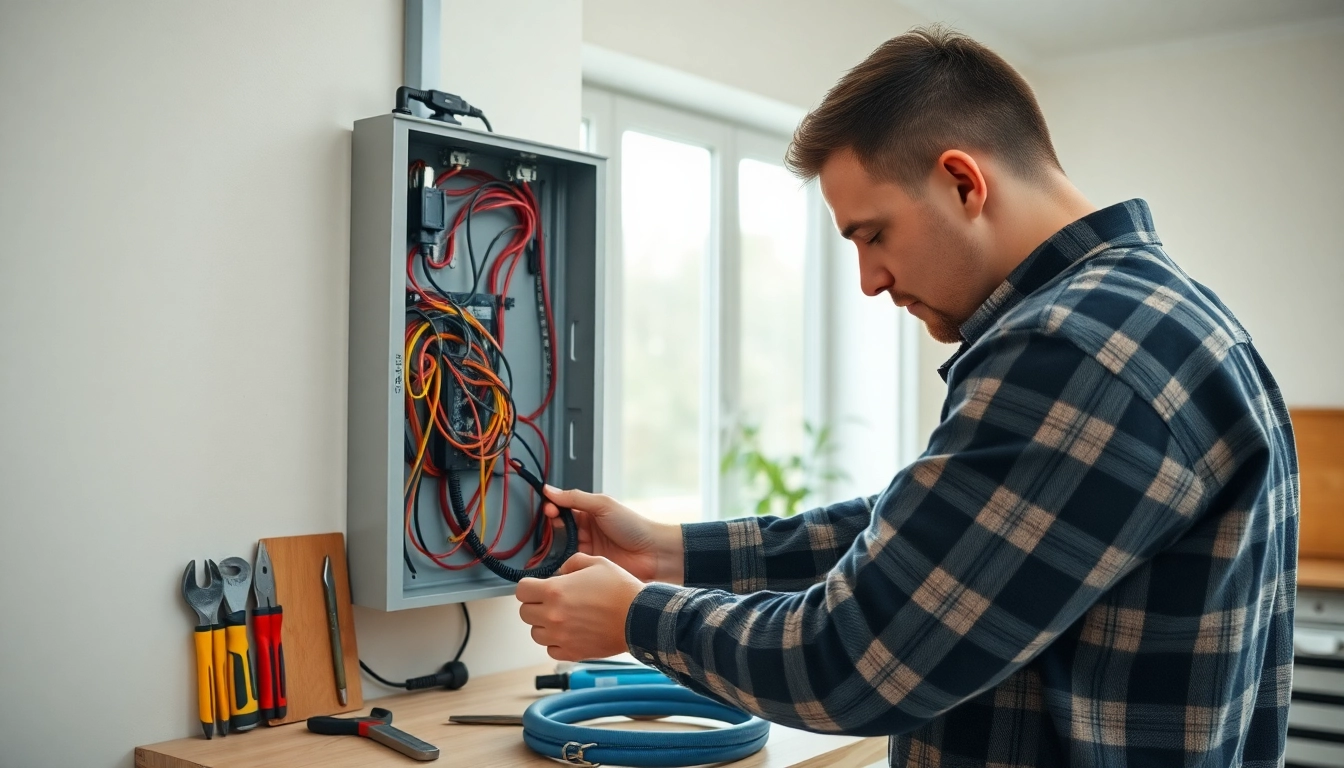Understanding the Role of an Electrical Panel
What Is an Electrical Panel?
An electrical panel, often referred to as a breaker box or service panel, is a critical component of a home’s electrical system. Functionally, it acts as the central hub for distributing electricity throughout your residence. It connects to the utility’s electrical supply and routes that power to various circuits in your home, allowing you to operate appliances and devices safely. The panel houses circuit breakers (or fuses in older systems) that protect each circuit from overload, improving safety and functionality.
For homeowners looking to upgrade or understand their Electrical Panel, understanding its components and role is essential. This switchgear can enhance your home’s energy efficiency and safety when appropriately installed and maintained.
Core Functions of the Electrical Panel
The primary functions of electrical panels include:
- Power Distribution: The panel distributes electricity to various circuits in your home, ensuring that power reaches fixtures, outlets, and appliances without overloading the system.
- Circuit Protection: Each circuit breaker within the panel can shut off electrical flow automatically when it detects an overload or short circuit, preventing potential hazards such as fires.
- Energy Regulation: The panel enables you to manage energy use by dividing circuits and allowing for separate control over different areas or devices.
Common Types of Electrical Panels
Several types of electrical panels are commonly found in homes, each serving specific needs:
- Main Breaker Panel: A standard choice for most homes, this panel controls all the circuits in the house and typically includes a main circuit breaker that can shut off power to the entire house.
- Subpanels: Used for additional circuits in larger homes, a subpanel can help manage power distribution in specific areas, such as garages, workshops, or outdoor spaces.
- Smart Panels: These modern panels integrate technology for better energy management and monitoring, allowing homeowners to track usage in real-time and optimize their energy consumption.
Signs You Need to Upgrade Your Electrical Panel
Frequent Tripped Breakers
One of the most common signs that your electrical panel may need an upgrade is frequent trips of the breakers. If you find yourself resetting breakers regularly, it indicates an overload on the circuit. This can occur if you’re using more devices than the panel can handle. Consistently tripped breakers could pose serious safety risks and indicate that you need a panel capable of managing a higher load.
Increased Electrical Demands
Modern homes often require more electricity than homes did decades ago due to the growing number of devices and appliances, such as smart home technology, energy-efficient systems, and high-capacity electrical machines. If you have added significant power-drawing appliances, like electric vehicles (EVs) or HVAC systems, your existing panel might not provide enough power to support the new electrical demands.
Age of Your Electrical Panel
The age of your electrical panel is a crucial indicator of whether it needs an upgrade. Most electrical panels can last for 20-30 years, but aging equipment may not handle today’s electrical loads. If your panel is older and exhibits signs of wear or outdated technology, it may be time to consider a modern upgrade to ensure safety and compliance with current electrical codes.
Choosing the Right Electrical Panel for Your Needs
Evaluating Ampacity Requirements
One of the first steps in choosing the right electrical panel is to assess the ampacity requirements for your home. The term “ampacity” refers to the maximum amount of electric current a conductor or device can carry before sustaining immediate or progressive deterioration. Common residential panels come in various sizes, typically ranging from 100 amps to 400 amps. Select a panel that matches or exceeds the ampacity needed for your home. Choosing the right size will prevent issues like circuit overloads and reduce the risk of electrical fires.
Comparing Brands and Models
Not all electrical panels are created equal; hence, it’s important to compare brands and models before making a decision. Popular brands like Square D, Siemens, and Eaton offer panels with different features and price points. When choosing, look for reliability, warranty terms, customer reviews, and whether they comply with local electrical codes and standards.
Understanding Electrical Codes
Electrical codes are regulations set by authorities to ensure electrical installations are safe and efficient. Familiarize yourself with local codes to ensure that any new electrical panel will meet all safety standards. This is especially important for homeowners considering upgrading or modifying their existing electrical panel, as installations must be inspected and approved by local government entities.
DIY vs. Professional Panel Upgrade
Benefits of Hiring a Licensed Electrician
While DIY projects can often save money, upgrading an electrical panel is not one of them. Hiring a licensed electrician ensures that all work is performed safely, correctly, and in accordance with local codes. Professional electricians have the training and experience to assess your home’s electrical needs accurately and will be able to make recommendations based on those needs. Additionally, hiring a professional guarantees that safety protocols are followed, reducing the risk of accidents during installation.
Safety Considerations
Safety is paramount when dealing with electricity. Working on or near electrical panels can be dangerous, with risks including electrocution, fire hazards, and potential damage to your home. A licensed electrician will understand the safety standards required, work with the right protective equipment, and take necessary precautions to prevent accidents. Even minor mistakes during a DIY project can have serious consequences.
Cost Comparison of DIY and Professional Services
The initial idea of handling a panel upgrade yourself can seem cost-effective. However, when heightening safety and ensuring compliance with regulations are involved, the costs can outweigh potential savings. A professional may cost more upfront, but it protects you from the risk of additional expenses arising from code violations or electrical failures after an improper installation. Always balance the prospective savings against safety, quality, and results when making your decision.
Maintaining Your Electrical Panel
Regular Inspection Tips
Maintenance is key to a reliable electrical panel. Homeowners should perform regular visual inspections every few months. Look for signs of deterioration, such as rust, corrosion, or burned connections. Ensure that the panel is clean and free from dust and debris. Depending on usage and age, scheduling a professional inspection annually is also advisable to ensure everything is functioning as it should.
Signs of Wear to Watch For
Common signs of wear and tear on an electrical panel include:
- Burning smells or overheating: This can indicate faulty connections.
- Loose breakers: Breakers should fit snugly; a loose breaker can lead to arcing and fires.
- Discolored or scorched areas: Any markings can indicate overheating and require immediate attention.
Upgrading Components for Improved Safety
If wear is detected, upgrading specific components can enhance safety without a full panel replacement. These upgrades may include replacing outdated breakers or adding surge protection devices to guard against electrical spikes. A licensed electrician can assess your panel and recommend specific upgrades to improve both performance and safety.



